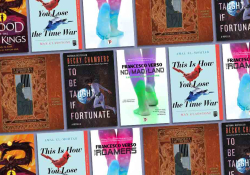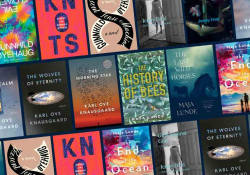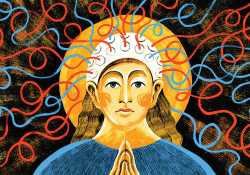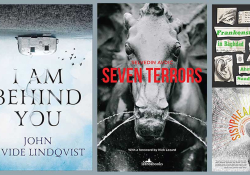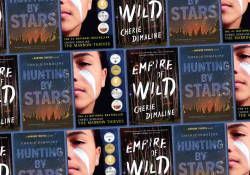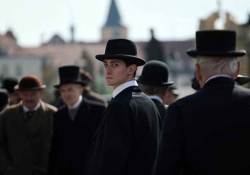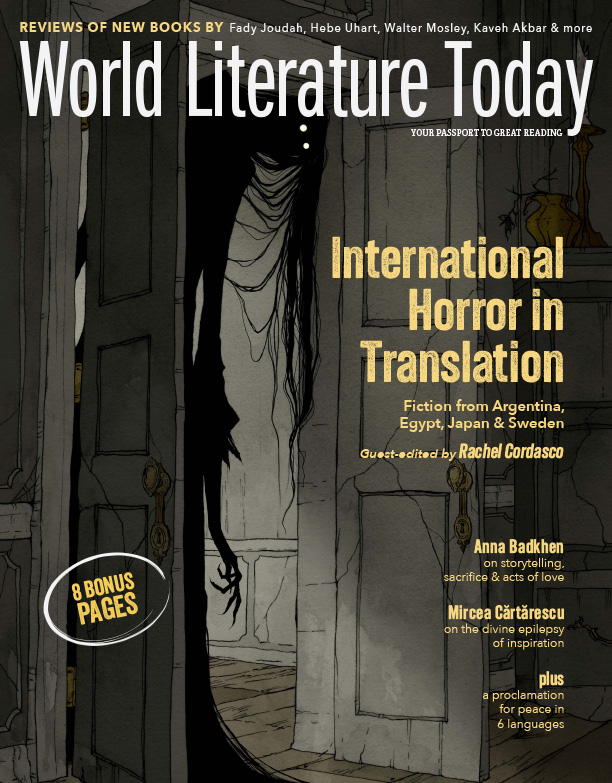Introduction: International Horror Fiction in Translation
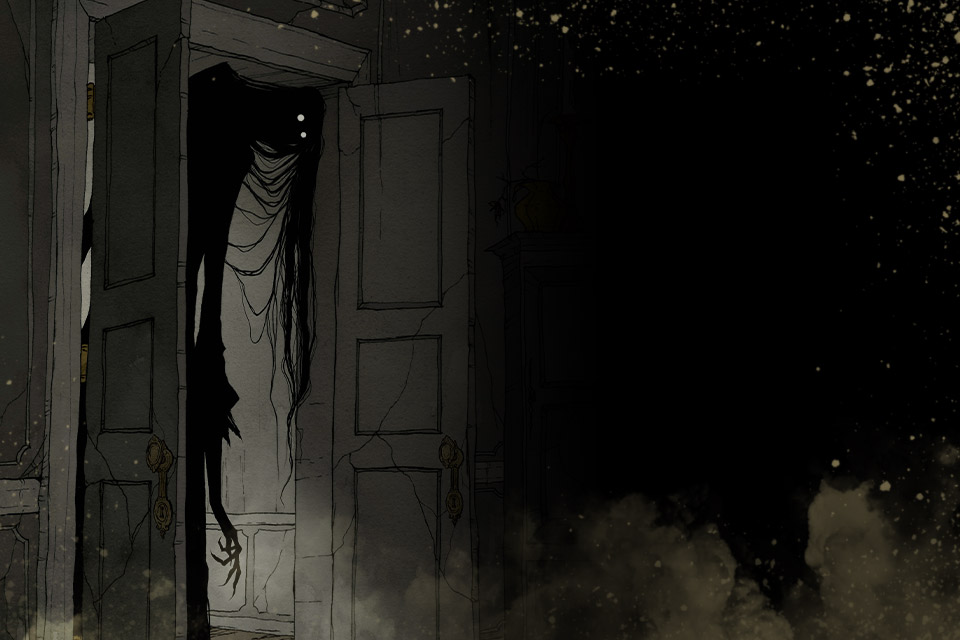
Discussions of horror fiction often begin with attempts at a definition. Questions like “what is ‘horror’?” and “is horror a distinct genre or a shadowy figure lurking at the edge of other genres?” prompt us to think more carefully about genre itself and its (fluid) boundaries. Before we know it, though, these words “genre” and “horror” tend to slip, together, out of focus.
Despite these difficulties in pinning down exactly what horror is, many authors, editors, translators, and scholars have nonetheless tried to define it. One might go back a couple hundred years to the Gothic writer par excellence herself for an attempt at a definition—according to Anne Radcliffe, one can distinguish “horror” from “terror” because “the first expands the soul and awakens the faculties to a high degree of life; the other contracts, freezes and nearly annihilates them.” As Radcliffe further explains, the “obscurity” that one finds in horror fiction “leaves something for the imagination to exaggerate.”i
Editors and translators James D. Jenkins and Ryan Cagel remind us that horror is quite ancient, listing “the witch Circe, murderous Sirens and [the] man-eating Cyclops in Homer’s The Odyssey[,] the Bible’s stories of demons and devils, [and] the Roman writer Pliny the Elder’s accounts of werewolves.”ii Scholars like Jess Nevins and John Clute have written extensively about these kinds of stories, noting that horror fiction preys on and prompts the reader’s reaction, leading the latter to recoil in fear or disgust.iii In an attempt to pin horror down, Clute argues that it is basically the Enlightenment’s worst nightmare, but Nevins takes issue with this, noting that “there was, and still is, a substantial amount of horror published outside the West that did not rely upon the Enlightenment for its conception and execution.”iv
This important nod to the billions of people for whom English is not a first language leads us to the point of this special feature on international horror fiction. It most certainly exists, and is sometimes even translated into English for the enjoyment of anglophone readers, but as Jenkins and Cagle point out in their introductions to the two volumes of The Valancourt Book of World Horror Stories, the work of finding and translating these stories is daunting, indeed. Jenkins describes his team poring over stories from a wide variety of languages, selecting those that seemed most interesting, translating them (sometimes in collaboration with the authors), securing permissions, etc. (reviewed in the Winter 2021 and March 2022 issues of WLT).v This work makes it difficult for small presses to be able to afford the time and money necessary for doing this work, but it is precisely the small presses that bring international horror fiction into English. These stories are vitally important to understanding the landscape of horror fiction being written today, and if anglophone scholars and readers want to engage with it, more of it needs to be translated into English.
Thanks to World Literature Today and the other print and digital magazines working to bring international fiction to anglophone readers, more and more stories from every genre are nonetheless making their way into our reading world. This WLT international horror fiction feature, which includes a “Top Twelve” list by Jess Nevins, four original works of translated horror fiction, and an online interview with translator Megan McDowell, will further our appreciation and understanding of what kinds of horror fiction are being written around the world, what is getting translated, and what this tells us about the wider literary output at this point in the early twenty-first century.
Horror is one of the fastest-growing genres being translated into English.
Indeed, horror is one of the fastest-growing genres being translated into English (if you want to call horror a genre, of course!). One fascinating data point that I gleaned from writing a reference book about speculative fiction in translation (SFT) since 1960 is that, since the late 1980s/early 1990s, horror, fantasy, and surrealism passed science fiction as the genres securing the most translations into English (remember, though, that translations in general account for a small fraction of the books and stories published in English each year). Arabic SFT, in particular, has been a major source of horror and dystopias, given the invasions of the early 2000s; while Japanese SFT has witnessed an increase in the number of horror texts, from the body horror of Asa Nonami and the Lovecraftian stories of Asamatsu Ken to the surrealism of Yōko Ogawa and the horror/science fiction hybrid texts of Koji Suzuki.
As Nevins’s list makes clear, horror contains multitudes. Here we can find stories about witches, zombies, cannibals, haunted houses, vampires, stalkers, deadly cults, and much more. My own romp through the SFT of the last sixty years revealed how fascinatingly different horror is depending on the language/country from which it emerges. The Italian horror in English since 2000, for instance, is filled with hauntings and demons, while Spanish-language horror seems split between uncanny and surreal psychological horror (exemplified by Argentine writers Samanta Schweblin, Mariana Enríquez, and Roque Larraquy) and bloody zombie dystopias (Carlos Sisi and Manel Loureiro, from Spain).
“Horror” contains multitudes.
This feature adds in a tantalizingly diverse mix of international horror fiction. Junko Mase’s “Death Valley” (translated by Sharni Wilson) offers us a surreal tale about victimization within a cult. Carlos Eduardo Antonio “Charlie” Feiling sets our spine tingling with the heavy steps of a dead man in the excerpt from his horror novel The Lesser Evil (translated by Frances Riddle). Egyptian author Mahmoud Fikry’s “The Devil’s Offspring” (translated by Emad El-Din Aysha) is a terrifying warning about making a pact with the devil. From Swedish author John Ajvide Lindqvist, we get a bone-chilling piece about how social media can conjure up a very unique kind of horror (translated by Marlaine Delargy). Finally, Agnethe Brounbjerg Bennedsgaard’s online interview with Spanish-to-English translator Megan McDowell provides insight into the creative process of translation and details Megan’s extensive experience translating horror and surrealist fiction.
So, turn on all the lights, put your cat on your lap, and enjoy these four works of translated horror fiction from around the world!
Madison, Wisconsin
i Radcliffe, On the Supernatural in Poetry (1826), 150, 151.
ii James D. Jenkins and Ryan Cagel, eds., The Valancourt Book of World Horror Stories, Volume One, 10.
iii Nevins, Horror Needs No Passport: 20th Century Horror Fiction Outside the U.S. and U.K. (2018); Nevins, Horror Fiction in the 20th Century: Exploring Literature’s Most Chilling Genre (2020). “Horror in SF,” in The Encyclopedia of Science Fiction, ed. John Clute and Peter Nicholls; John Clute, The Darkening Garden.
iv Nevins, Horror Fiction in the 20th Century, xv.
v Jenkins and Cagel, Valancourt Book, 1:11.

